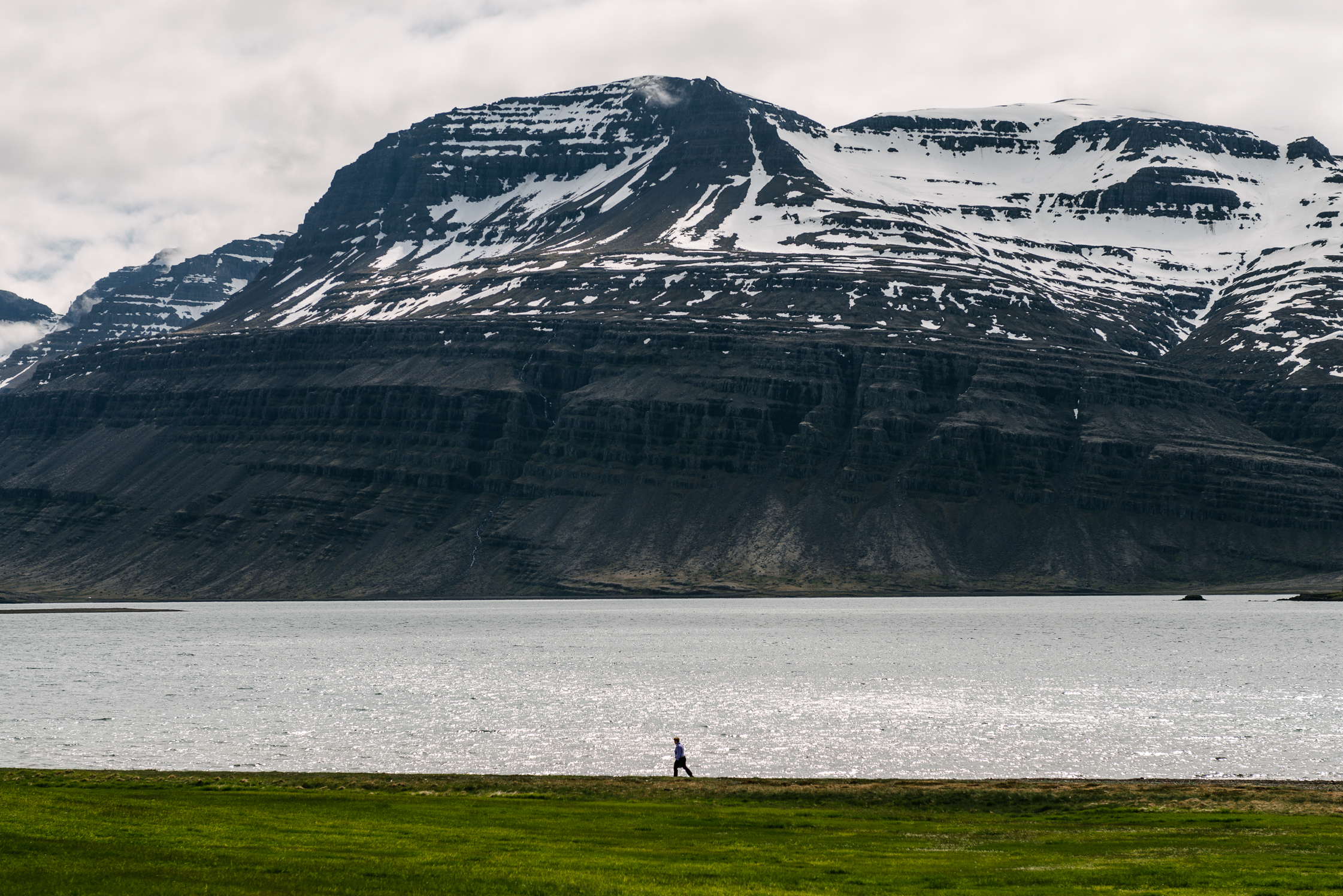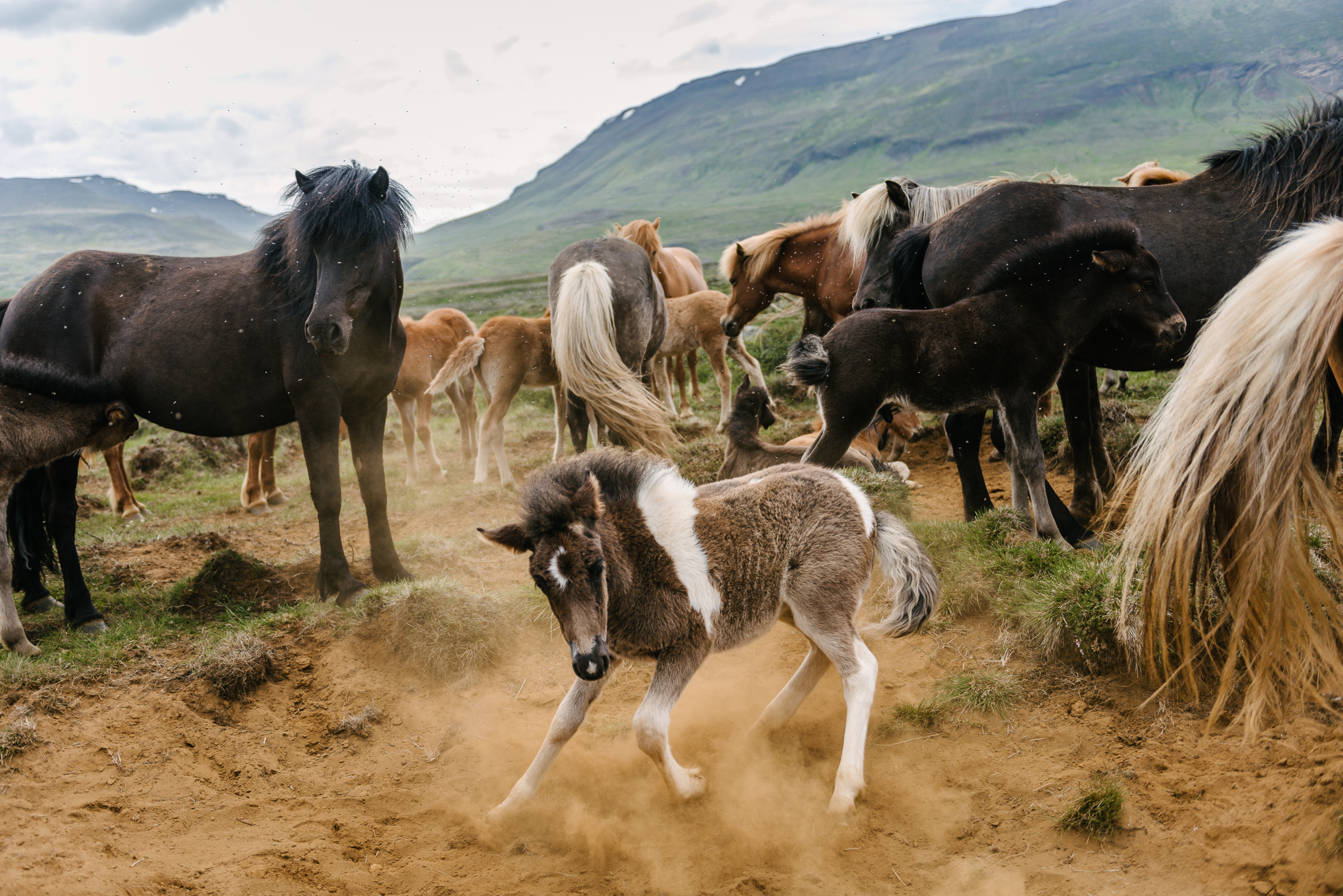Frigid as the weather may be for humans, for birds the temperate summertime climate is perfect for breeding—and the skies around the wetlands surrounding south-eastern harbour town Hofn enjoy the winged traffic.
The East fjörds are an underrated corner of Iceland, dwarfed by the South Coast’s sights and the lure of the remote North, it’s characterized by mountains, narrow fjörds, and natural harbors, bringing to mind the highlands and rugged coastlines of northern Europe and Scandinavia.








The Dettifoss falls are one of the most powerful waterfalls in Europe with water cascading down a steep 45 meters.
“By the time we got up north we were struck by how ‘normal’ seeing waterfalls had become—only in Iceland.”
On the road up north, home to Iceland’s second largest urban centre, Akureyri, and whale watching centre Húsavík, a visual rupture occurs: the terrain around Mývatn, with its bubbling blue mud pits and lava formations which are said to contain trolls trapped in stone for all eternity. Standing on the cracked, otherworldly plains, it’s not difficult to imagine placing the folkloric beings into these settings. Icelanders have rich storytelling traditions—it’s still considered bad luck to deny the existence of the Huldufólk, mythic beings including elves to sprites who are left to live undisturbed beneath rocks.
During the mammoth drive west, we veered off the Ring Road to the Snæfellsnes Peninsula. Jutting out beneath the isolated West Fjörds, according to Jules Verne, it hosts the entry point to the passage to the center of the world—but for us signaled the end of our looping route as we headed back to Reykjavík to meet with a few local characters before home.

Lake Mývatn was formed by a huge eruption 2,300 years ago. The area is still geothermally active, with colored mineral deposits visible on the cracked surface.
This famous cave, Grjótagjá, played hideout to Jon Snow in Game of Thrones. Inside lies a natural pool that tempts visitors through the craggy entryway.







